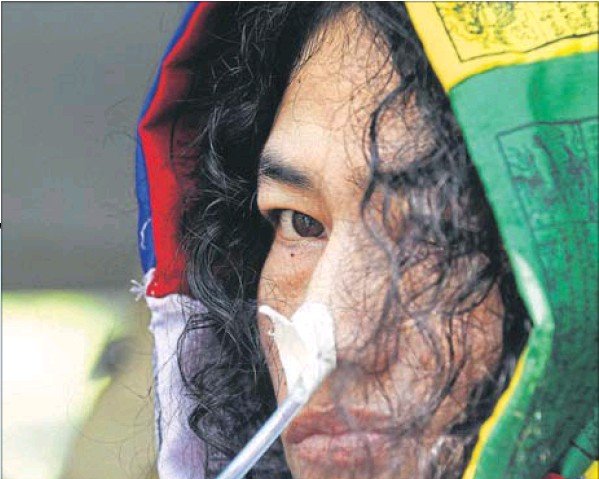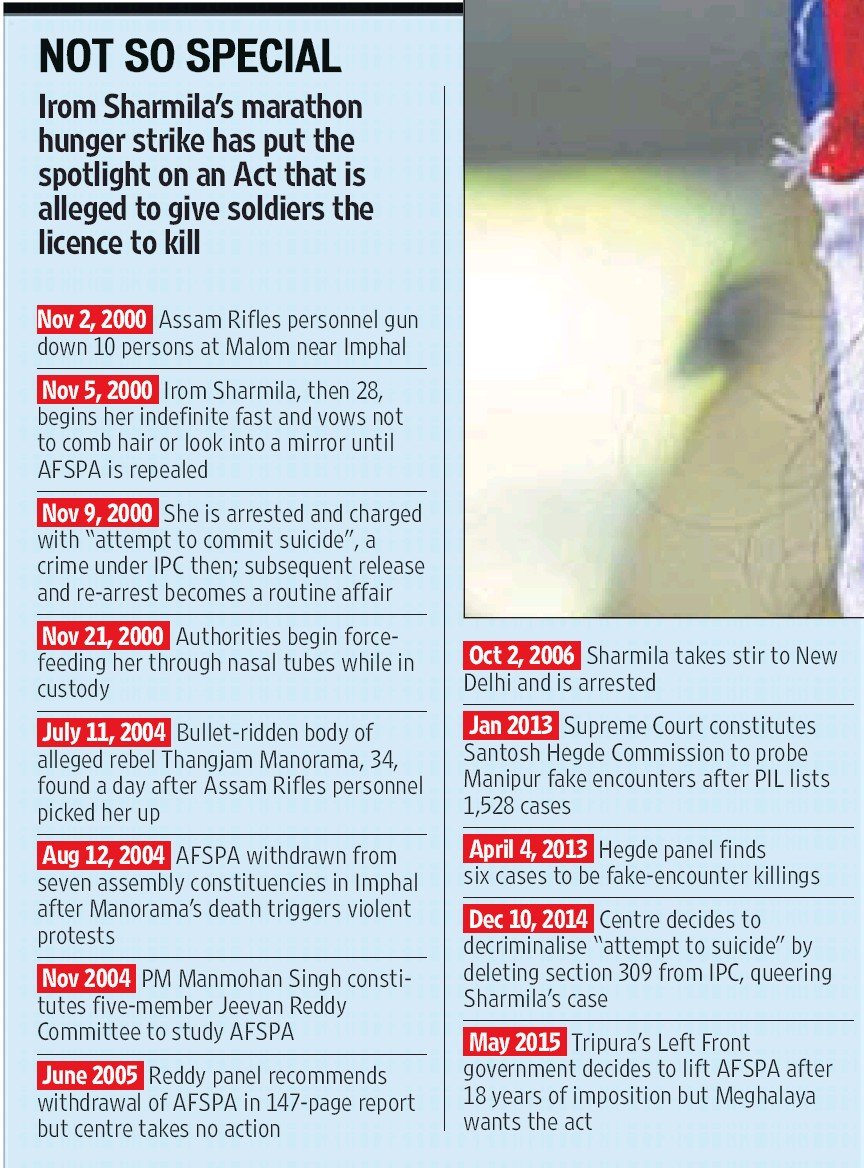LEGAL REPRIEVE Activists say the Apex court’s judgment will ensure those who violate rights or indulge in extra-judicial killings will not go unpunished
The ruling will ensure that those who violate rights or indulge in extra-judicial killings will not go unpunished. A blanket AFSPA on the people of Manipur is in itself a violation of the Constitution… BEENALAXMI NEPRAM, Rights activist This won’t make my son come back to life. But an honest probe should save other fathers in Manipur the trauma of losing their sons to bullets TOKPAM SAMARENDRA, whose son was allegedly killed by personnel of Assam Rifles
GUWAHATI: Tokpam Samarendra waited almost 16 years for justice. He didn’t get it on July 8 when the Supreme Court said the armed forces cannot use excessive or retaliatory force even in areas where the controversial Armed Forces (Special Powers) Act is in force.
But the 72-year-old man from Manipur saw a ray of hope when the top court sought an independent inquiry into 1,528 cases of extra-judicial killings between May 1979 and May 2012 in his home state. His son, Shantikumar, is on that list. “This won’t make my son come back to life. But an honest probe should save other fathers in Manipur the trauma of losing their sons to bullets,” Samarendra said.
His 19-year-old son was among 10 people that Assam Rifles personnel, reacting to a bomb blast, had allegedly gunned down at Malom near the Manipur capital Imphal on November 2, 2000.
The incident made Irom Sharmila, then 28, go on an indefinite fast against the “draconian” AFSPA, which gives security forces extra-judicial powers during anti-insurgency operations.
Manipur had seen massacres by armed forces before Malom. In March 1984, CRPF personnel gunned down 13 people, including a 10-year-old girl, watching a volleyball match at Heirangoithong on the outskirts of Imphal.

The CRPF men, a probe panel said later, had reacted after a group of Manipuri militants snatched the rifles of nine constables standing guard near the volleyball court and shot the tenth before melting away.
Operation Bluebird followed three years later at Oinam, a Naga village 95km north of Imphal.
An Amnesty International report said the armed forces tortured the villagers from July to October 1978 after National Socialist Council of Nagaland rebels attacked an Assam Rifles outpost, killed nine soldiers and took away their arms and ammunition.
That period of “punishment” for helping rebels claimed 27 lives, though the official count is 15.
Such incidents of mass killings stirred human rights campaigners into action. Sharmila’s silent protest put the focus on the Armed Forces (Special Powers) Act and how it gives the security forces the “licence to kill”.
Sharmila, who has vowed to end her fast only if the Armed Forces (Special Powers) Act is repealed, has been going through a release-and-re-arrest routine and is nose-fed at a government hospital ward, which has been converted into a jail for her.
Imphal-based Human Rights Alert Manipur (HRAM) and Extrajudicial Execution Victim Families Association, Manipur (EEVFAM), which petitioned the top court on the 1,528 cases, say people are often picked up at random and killed in “encounters” — a name given to shootouts with militants, real or staged.
The association’s president, 33-yearold Renu Takhellambam, lost her husband Monghangjao in one such “encounter” on April 6, 2007. “The Supreme Court’s observation in connection with our cases is welcome, but justice still eludes us,” she said.
Babloo Loitongbam, executive director of HRAM, termed the court’s view a small step forward in a long legal battle.
“We have been demanding a special investigation team to probe the 1,528 cases, but we are not clear what this probe (as sought by SC) means,” he said.
The court, said rights activist Beenalaxmi Nepram, has reaffirmed people’s faith in the justice system. “The ruling will ensure that those who violate rights or indulge in extra-judicial killings will not go unpunished. A blanket AFSPA on the people of Manipur is in itself a violation of the Constitution. We will keep fighting for its repeal from the entire country,” she said.
But army and paramilitary officers say they never use excessive force, pointing out that Manipur Police commandos – without the Armed Forces (Special Powers) Act shield – are accused in many of the 1,528 cases. An instance is that of Hijam Sanjoy, 26, who the commandos had killed in an “encounter” on June 28, 2008.
“Full removal of Armed Forces (Special Powers) Act is not desirable. But every state should review the situation and remove it from areas where it is not needed.
Tripura decided to lift AFSPA last year while the army does not operate in certain cities of Assam. Manipur too made the Imphal area AFSPAfree, but states troubled by terrorism want the act to stay,” Guwahati-based Ranjit Barthakur, retired brigadier, said.
In 2005, the Justice Jeevan Reddy panel recommended repealing Armed Forces (Special Powers) Act and incorporation of its provisions into the Unlawful Activities Prevention Act.Manipur’s AFSPA-phobia does not necessarily translate into hostility towards the army or paramilitary forces. But reining in the armed forces and probing the extra-judicial killings, many feel, would go a long way in delivering justice to a scarred state.












 Nearly every video of Burhan Wani shows him affirming that his fight is for Islam. (Express Photo by Shuaib Masoodi)
Nearly every video of Burhan Wani shows him affirming that his fight is for Islam. (Express Photo by Shuaib Masoodi)





















































